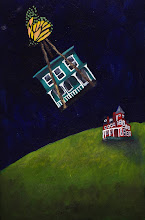

Photos by Louise Millmann
Just as the great Jane Jacobs fought tirelessly to save Greeenwich Village from destruction in the 1960s, neighborhoods all over NYC continue to battle demoliltion in the name of so-called progress. Despite the cold, the Bowery Alliance of Neighbos, Historic Districts Council,
Greenwich Village Society for Historic Preservation, Lower East Side Preservation Initiative, nine other community groups, Assemblymember Deborah Glick, Senator Tom Duane,a rep from Sen. Squadron, poet Hettie Jones, historian Joyce Mendelsohn &
area residents came together on Friday afternoon to urge landmark designation for the endangered 35 Cooper Square, the oldest building on the Square. This event was called because despite a joint appeal from BAN, HDC,GVSHP, LESPI and Councilmember Rosie Mendez, the Landmarks Preservation Commission refused to grant even a public hearing on issue.
Has NYC learned nothing from the lessons of the past? The demolition of the original Pennsylvania Station, and the preservation of Grand Central should be a clear reminder why we need to save historical structures in NYC. The city's landscape is a fabric of complex textures that most American cities lack. Without that historical context, the city will become a bland, homogenized version of its former self. To help save this building, please consider signing the online petition.







